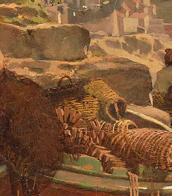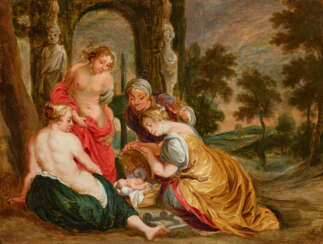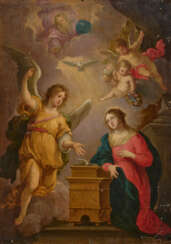victor wolfvoet ii (1612 - 1652)

Anthony van Dyck, a Flemish painter born in 1599 in Antwerp and passed away in 1641 in London, is celebrated as one of the foremost Baroque painters of the 17th century. His notable contributions to the art world include his exceptional portraits of European aristocracy, as well as his religious and mythological paintings. Van Dyck's early exposure to art was influenced significantly by his apprenticeship with Hendrik van Balen and later, by the profound impact of working alongside Peter Paul Rubens. His mastery was recognized early on, leading him to set up his own workshop by the age of 15.
Van Dyck's journey to Italy in 1621 marked a pivotal phase in his career, allowing him to immerse himself in studying the Italian masters and commencing his successful stint as a portraitist. His style evolved under the influence of Titian, evident from his vibrant use of color and refined modeling of form. Van Dyck's Italian period not only honed his artistic skills but also established his reputation as a painter of consequence.
Upon returning to Antwerp, van Dyck's portraits became highly sought after, leading to commissions from notable figures such as Archduchess Isabella and Queen Mother Maria de' Medici. His role as a court painter further solidified in England under the patronage of King Charles I, where he was knighted and appointed as the principal painter, profoundly shaping the aristocratic character of Charles I's reign through his portraits.
Van Dyck's legacy extends beyond his death, having influenced English portrait painting for over a century. His innovative techniques in watercolour and etching, along with his sophisticated portrayal of subjects, continue to be admired. His art not only showcases his technical prowess but also reflects the cultural and social nuances of his era, making his work a significant study for collectors and art historians alike.
For enthusiasts eager to explore the intersections of art, history, and culture through the lens of Anthony van Dyck's work, staying informed about new discoveries and auction events is essential. Signing up for updates can provide exclusive insights into the world of one of the most influential figures in Flemish art. This subscription ensures that collectors and experts are well-informed of any developments related to van Dyck's oeuvre, enhancing their understanding and appreciation of his contributions to the art world.

Victor Wolfvoet the Younger was a Flemish painter and art dealer, a member of the Guild of St. Luke.
It is believed that as a young man he worked in the studio of Peter Paul Rubens, where he assisted in the creation of works and painted several compositions based on the works of the great Antwerp master. In addition to painting his own pictures of historical and allegorical themes, Wolfvoet made copies of paintings by prominent painters of his time, including van Dyck and Rubens.
In addition, Wolfvoet the Younger, like his father, was active in the art trade. The inventory of his estate, compiled after his death, lists more than seven hundred works, including twenty oil sketches by Rubens.
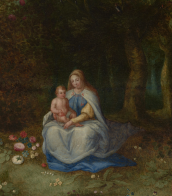

Victor Wolfvoet the Younger was a Flemish painter and art dealer, a member of the Guild of St. Luke.
It is believed that as a young man he worked in the studio of Peter Paul Rubens, where he assisted in the creation of works and painted several compositions based on the works of the great Antwerp master. In addition to painting his own pictures of historical and allegorical themes, Wolfvoet made copies of paintings by prominent painters of his time, including van Dyck and Rubens.
In addition, Wolfvoet the Younger, like his father, was active in the art trade. The inventory of his estate, compiled after his death, lists more than seven hundred works, including twenty oil sketches by Rubens.
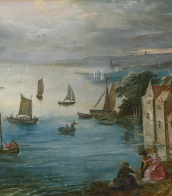

Victor Wolfvoet the Younger was a Flemish painter and art dealer, a member of the Guild of St. Luke.
It is believed that as a young man he worked in the studio of Peter Paul Rubens, where he assisted in the creation of works and painted several compositions based on the works of the great Antwerp master. In addition to painting his own pictures of historical and allegorical themes, Wolfvoet made copies of paintings by prominent painters of his time, including van Dyck and Rubens.
In addition, Wolfvoet the Younger, like his father, was active in the art trade. The inventory of his estate, compiled after his death, lists more than seven hundred works, including twenty oil sketches by Rubens.


Victor Wolfvoet the Younger was a Flemish painter and art dealer, a member of the Guild of St. Luke.
It is believed that as a young man he worked in the studio of Peter Paul Rubens, where he assisted in the creation of works and painted several compositions based on the works of the great Antwerp master. In addition to painting his own pictures of historical and allegorical themes, Wolfvoet made copies of paintings by prominent painters of his time, including van Dyck and Rubens.
In addition, Wolfvoet the Younger, like his father, was active in the art trade. The inventory of his estate, compiled after his death, lists more than seven hundred works, including twenty oil sketches by Rubens.
